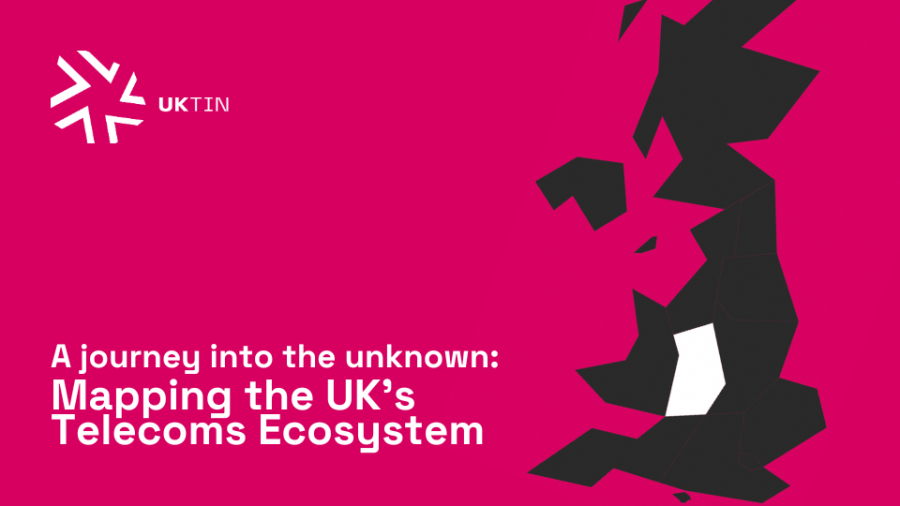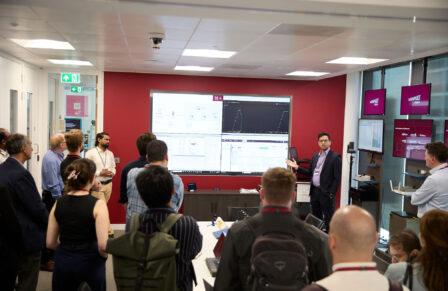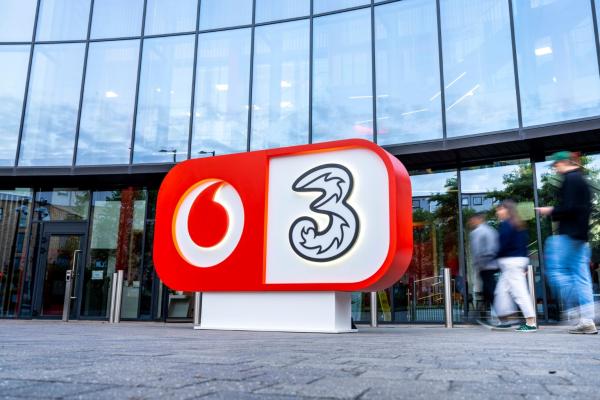Written by Dimitra Simeonidou

I like to think of our work at UKTIN as offering a front door for the telecoms sector.
That could be for a university researcher or incubator project trying to figure out real-world applications (and find funding) for their hunch or invention, a small business owner in an adjacent space seeking out new applications (and markets) for their tech, an overseas student trying to figure out how they can get a foot into the UK’s buzzy telecoms space, or an international company looking to invest in the amazing research capabilities of the UK.
Ultimately — and this may be a lofty goal, but one I believe to be worth stretching for — we want to make telecoms the easiest sector to navigate in the UK.
When we started this project, that goal seemed close to unattainable, given the complex nature of the industry. Anyone approaching from the outside would be forgiven for feeling like a blimp left floating adrift in space. So it’s fitting that our solution to this challenge has itself involved a journey into the unknown.
It was back at the turn of 2023 that my brilliant team first proposed the idea of using a large language model to help us map the UK’s telecoms ecosystem. It feels strange to say now, but taking this approach to developing our own proprietary solution felt like a huge risk. At the time, the technology was still largely unproven. Effective, autonomous chatbots were still mainly the domain of science fiction and customer service, and big bids made on applying the technology to search were fraught with uncertainty.
The potential, however, was too much to ignore.
We didn’t want to just dig out a data lake for the uninitiated to flounder in. And so we set about figuring out how to combine large language models with semantic search to surface the most useful, up-to-date information for anyone wanting to explore — and understand — the UK telco sector.
If you’ll allow me to dig into the weeds for a moment, I think it’s important to explain how our discovery tool uses AI to not just navigate our UK telecoms database but to create and curate it too.
Firstly, the tool continuously scans existing datasets that we have identified as useful to our users (such as the UKRI and UK Patent Office databases) and mirrors updates to those collections as they are made. This means our database benefits from continuous renewal and is always providing the most up-to-date information.
Secondly, our tool uses an AI embedding algorithm to return more informed search results. We use a vector database and apply semantic search which means the engine is drawing connections between things that are adjacent to the information being searched for, and returning those results to the user. This makes for a system that is far more intuitive and rewarding to use: it can be used to make conversational searches in plain English, rather than requiring either highly specific (the name of a funding prize, for instance) or overly broad terms (just searching ‘funding’ might return an irrelevant deluge).
If all this sounds very complex, that’s because it is. I’ve struggled to understand it myself at times. So, just as crucial as collating and curating the information presented to users is presenting it in a clear and coherent fashion. Our discovery tool can generate tables, charts, and heatmaps to enhance the overall user experience, making complex data more comprehensible — and providing more and better information than a traditional method of database search could give.
Taking a risk on a new technology isn’t just a black and white case of win or lose. There’s always the very real possibility — even when it looks like everything has gone right — of unforeseen consequences. As academics, we understand that unforeseen consequences are in fact an inevitability. AI and large language models are no different, but thanks to the team’s diligence we have been able to account for many of the common issues experienced by those developing AI search tools.
Our tool’s meticulous design focuses on minimising hallucinations (when a large language model generates false information), and ensuring the generation of valid information by relying solely on data from selected sources. To further enhance transparency — and in line with rigorous academic tradition — the tool provides references and web links, allowing users to verify and explore the presented data in its original source.
And it works. Having already wowed UKTIN colleagues, University of Bristol representatives were on the UKTIN stand at MWC in Barcelona earlier this year to demo the tool. Alex Davies, a senior analyst at Rethink Technology Research, was one of the inquisitive attendees to give it a go at the show and afterwards described the tool as “a tangible example of an actually useful chat service. Instead of battling customer service menus, the UKTIN tool looks like an incredibly useful portal to locate information that is otherwise really quite disparate.”
Locating information that is otherwise disparate? Sounds like a good description for the challenge we’ve been faced with in uniting our fragmented UK telecoms sector. So we must be on the right track.
What’s coming next:
- Demo at the Ecosystem Conference, May 2024
- Release of Discovery toolkit for June 2024
Scan to access our discovery toolkit, a curated collection of free-to-use data resources to support you in understanding capabilities and identifying the different players in UK telecoms.









